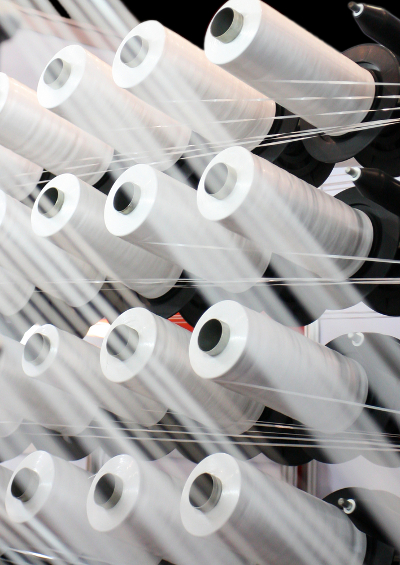Of Textiles and Tariffs
Lower tariffs could make quite a difference for the high-end fashion industry and for brand-conscious fashionistas.
July 21, 2014

Another negotiating round on the presumed road to the Transatlantic Trade and Investment Partnership (TTIP) is upon us. Time to focus on some practical, real-life concerns.
Europeans living on the other side of the Atlantic are used to friends arriving with empty bags to buy Levi’s jeans, American Apparel shirts or Red Wing work boots, a brand that boasts of handcrafting its products in Minnesota or Missouri.
Many Americans spend their European vacations scouting for leather footwear and designer suits, not just because of the bigger selection but also because of the cheaper prices. Lovers of Italian or French luxury brands like Prada or Louis Vuitton know all about this. A Hugo Boss men’s suit costs upwards from $800 in the U.S. whereas prices start below 500 Euros in Germany.
It is true that most apparel sold in the U.S. or in Europe today is made in places like China or Vietnam. And a staggering 99% of shoes sold in the U.S. are produced overseas, according to the Footwear Distributors and Retailers of America.
Yet, the prospect of phasing out transatlantic tariffs gets more than a shrug from the industry.
“Only 3% of garment imports come from Europe”, says Julia Hughes from the U.S. Association of Importers of Textiles and Apparel who also admits to go on shoe buying sprees during trips to the other side of the Atlantic. But the volume is big enough – and both sides would benefit from a more unified transatlantic market.
This is true for the harmonization of standards – country of origin labeling to washing instructions and safety tests were discussed at the last round of TTIP negotiations in May. But the sector would also benefit from a more classic approach to a trade agreement – the lowering or abolition of tariffs.
Low-hanging fruit?
Tariffs are generally considered the low-hanging fruit in the complex free trade negotiations between the U.S. and the EU. Already low on both sides of the Atlantic, their planned elimination does not promise huge gains in economic growth.
While average tariffs in transatlantic trade are extremely low already (3.5% on average on the U.S. side, 5.2% in the EU), shoes and textiles are a notable exception. According to the European textile federation Euratex, the EU imposes maximum duties of 12% for American made bed linen.
In the U.S., the rates go even higher: up to 19.7% for knitted wool shirts for women or 28.2% for man-made fiber overcoat, 32% for man-made fiber t-shirt. French clothing exporters face tariffs of up to 40% when they sell their products in the U.S., according to EU trade commissioner Karel De Gucht.
American designers who cater to the luxury market, on the other hand, suffer from high duties on fabric imports from Europe. According to industry representatives, New York based groups alone pay $30 million a year for fabric imports.
Reducing these costs would potentially leave the U.S. fashion industry more money for hiring and investing in technology. Or, at least equally likely, simply more profits.
In a similar vein, Matt Priest, the spokesman for the Footwear Distributors and Retailers of America, claims that American shoe importers could invest more and create more jobs if the $54 billion industry were relieved of $2.3 billion duties a year. “And we are also anxious to lower the burden for our consumers”, he adds.
Lower prices: The lure of travel
But what the consumer would really get out of all this seems less clear. After all, “it is up to the retailers and distributors to decide if that reduction in cost will be reflected or not in the sales price”, writes Luisa Santos, the spokeswoman for Euratex.
There are signs that this will not necessarily be the case. LVMH, the owner of the brand Louis Vuitton, and Italian shoemaker Salvatore Ferragamo recently raised their retail prices in Europe to match the sums their customers from overseas (most of them from China) were willing to pay.
But what if the prices for Levi’s jeans and Hugo Boss suits really were to converge on both sides of the Atlantic? For some of us, this outcome might be the worst of all. After all, turning the U.S. and the EU into one big duty free zone would certainly take away some of the fun of transatlantic traveling.
Takeaways
Tariffs are the low-hanging fruit in the complex free trade negotiations between the US and the EU.
Ending the tariffs would end another type of gender discrimination, as duties on women’s shoes are higher.
American shoe importers could invest and create more jobs without the $2.3 billion annual duties.
The retailers and distributors would decide if the reduction in cost would be reflected in the sales price.
Turning the US and EU into one big duty free zone would take away some of the fun of transatlantic traveling.

